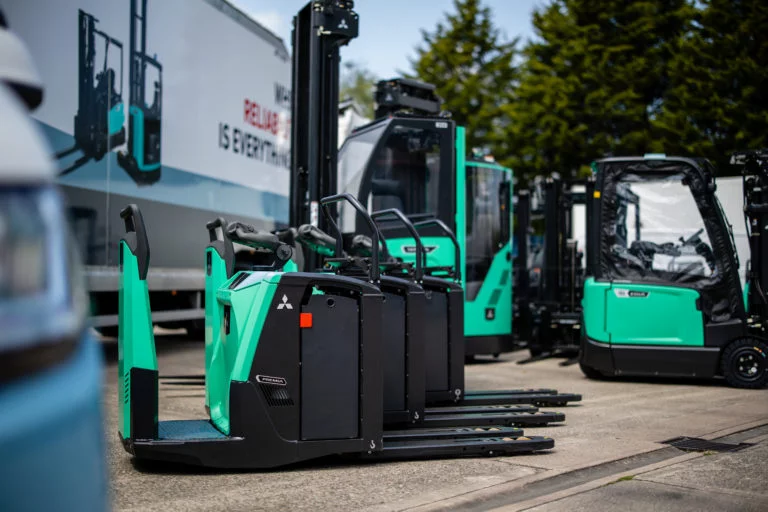Are You Winning or Losing the Final Delivery Battle, asks Nagendra Rao, President of Sales, leads revenue generation and drives business growth at Trigent Software Inc.
Let’s face it: last-mile delivery is logistics’ gritty battleground. It’s messy, chaotic, and, frankly, it’s the ultimate test of your logistical swagger. Even the most battle-hardened logistics vets know there’s no glory in nearly getting it right. When the rubber meets the road — from bustling city streets to suburban cul-de-sacs — the last mile either crowns heroes or crushes reputations. And with customers demanding deliveries faster than ever, there’s zero room for slip-ups. Ready to dive into the reality of today’s last-mile challenges?
Understanding the Core Challenges of Last-Mile Delivery
1. Skyrocketing Customer Expectations
Blame Amazon, blame Uber Eats, blame whoever you want—but the truth is, instant gratification is now standard. According to a Capgemini report, nearly 74% of customers would increase spending with a retailer offering exceptional last-mile delivery experiences, while 55% would switch retailers if a competitor provided faster services. Amazon’s introduction of Prime same-day delivery reshaped consumer expectations, pushing logistics companies into an adrenaline-fueled sprint.
2. Ballooning Operational Costs
The last mile consumes approximately 53% of the total shipping costs. This figure has only risen amid soaring fuel costs, increased labor expenses, and tariff shifts from recent regulatory changes under the Trump administration. These tariffs significantly increased logistics providers’ costs, affecting everything from vehicle parts to packaging materials. Throw congested hotspots like NYC or LA into the mix, where DHL and FedEx regularly battle traffic congestion, and urban fulfillment hubs become survival gear.
3. Real-Time Visibility — Or Lack Thereof
Route optimization seems straightforward—until you hit unexpected detours, failed deliveries, or traffic snarls. Studies reveal that 91% of consumers actively track their packages, with 39% tracking once a day and 19% doing so multiple times daily, highlighting the crucial need for reliable real-time visibility. To address this, UPS integrated On-Road Integrated Optimization and Navigation (ORION) technology to tackle route inefficiencies, underscoring the industry’s ongoing struggle to adapt and optimize.
4. Returns: Logistics’ Unwanted Encore
Returns aren’t just a buzzkill; they’re expensive and unpredictable. US retail returns reached an eye-watering $816 billion in 2022, according to Merchants Fleet. Reverse logistics becomes a thorny, costly sideshow, complicating scheduling, capacity management, and overall operational efficiency.
5. Specialized Materials and Regulatory Compliance
Think refrigerated goods, hazardous chemicals, or flammable liquids: each demands tailored delivery modes and stringent regulatory compliance. Recent regulatory changes, including adjustments in safety standards and material handling protocols, compound these complexities, requiring logistics providers to frequently recalibrate operations.
6. Sustainability Under Pressure
Adopting the green route isn’t just trendy, it’s increasingly mandatory. As highlighted in recent industry analyses, 48% of customers now prioritize brands with clear environmental commitments. Electric fleets, optimized packaging, and reduced emissions are becoming necessities, demanding substantial upfront investments and significant operational pivots. Rivian and Amazon’s electric delivery fleets highlight significant operational pivots necessary for meeting environmental standards.
7. Impact of Poor Delivery Experiences
A striking 70% of consumers are likely to share negative experiences online following late or incorrect deliveries, significantly threatening brand reputation. Nearly 39% of shoppers won’t give retailers a second chance after poor delivery experiences, underscoring the high stakes of last-mile execution.
Why Crushing Last-Mile Challenges Matters
Tackling these hurdles isn’t just about operational smoothness. It’s about protecting your brand reputation and securing lasting customer loyalty. Your final delivery step? It’s your ultimate brand ambassador. Voxware found that 69% of consumers are less likely to shop again with a retailer if delivery promises aren’t met within two days of the expected date. Just ask Domino’s, whose entire brand reputation revolves around reliable last-mile performance.
Optimizing last-mile efficiency also enhances profitability by significantly slashing fuel, labour and maintenance costs. Enhanced API integrations, precise route planning, and optimized resource use aren’t mere cost savers, they’re essential profitability drivers. According to McKinsey, companies that implement advanced tracking and visibility solutions can reduce logistics costs by up to 15% and improve delivery times by 20%.
Tech as Your Secret Weapon
Let’s face it: Last-mile logistics is only getting tougher. It’s time to embrace the grind, innovate relentlessly, and adapt to shifting expectations, tightening regulations, and emerging technologies.
For logistics veterans striving to master the last mile, tech isn’t optional anymore: it’s your survival kit. AI-driven route optimization, predictive analytics, and automated dispatch systems aren’t just buzzwords; they’re critical lifelines. With their strategic tech acquisitions, companies like Walmart showcase how real-time tracking applications and intelligent algorithms maintain a competitive edge. So it’s time to gear up, dig in, and dominate this high-stakes battlefield with the right tech solutions.
similar news
First Pan-European Last-Mile Logistics Platform Targets Single Tenant Assets











